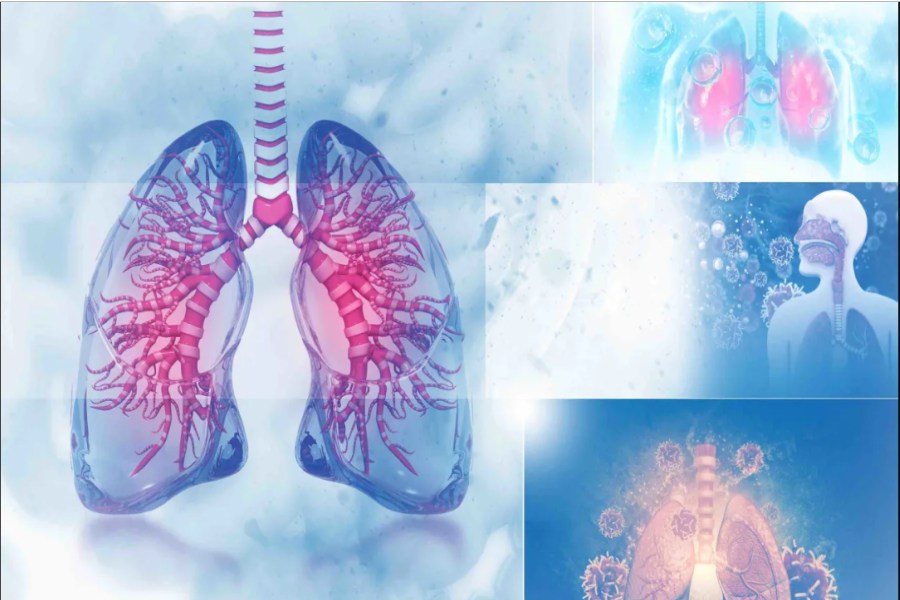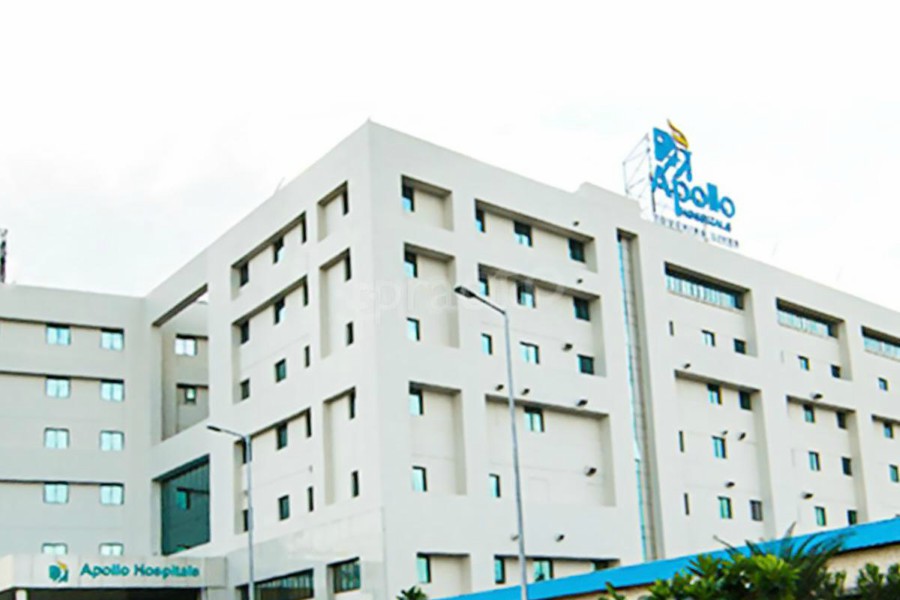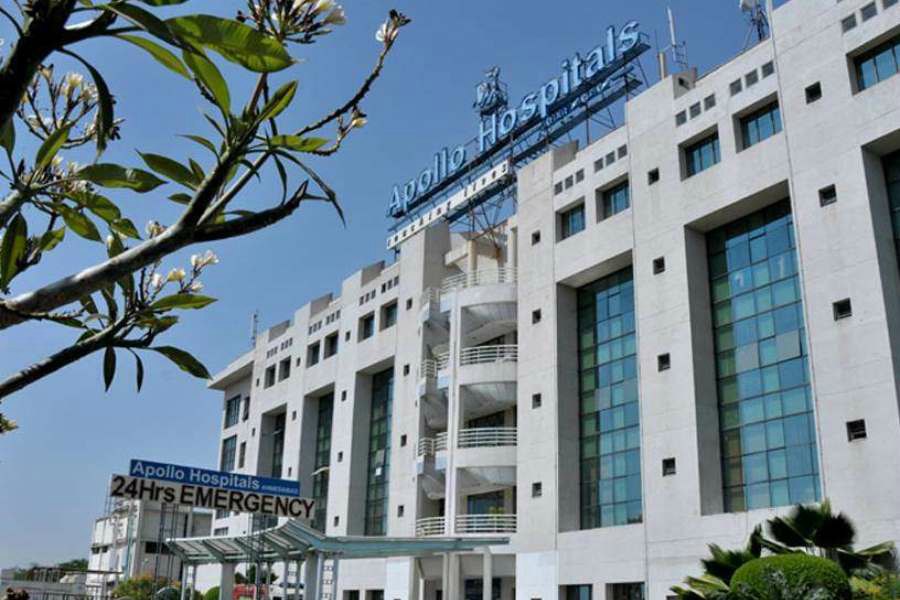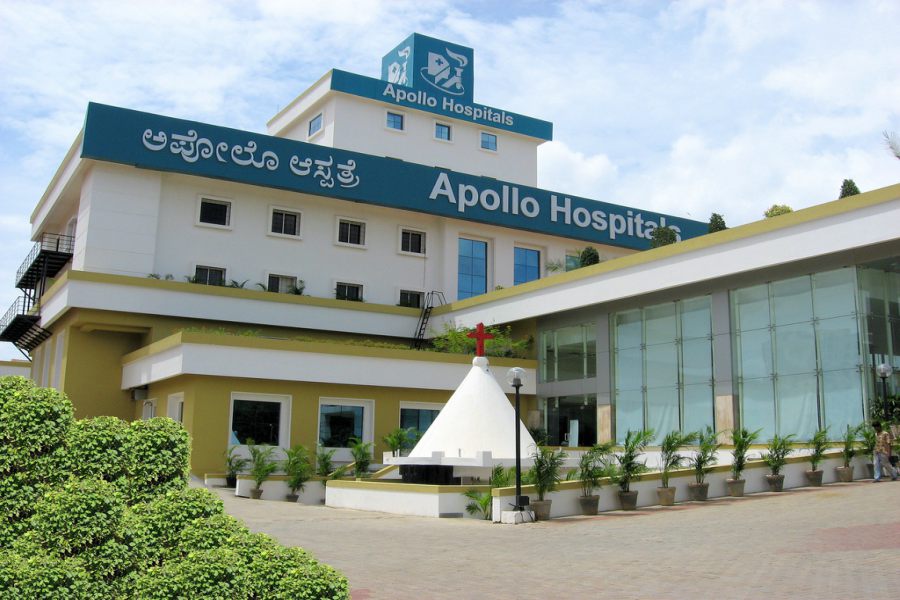
Overview
Lung cancer is a form of cancer that begins when the cells in the lungs (carry oxygen in and out while breathing) grow abnormally. In the worldwide population, lung cancer is one of the most prevalent cancers and cause of cancer-related mortality. Lung cancer may start in the lungs and spread to lymph nodes or other organs like the brain or from other body organs may reach to lungs.
Lung cancer can be of two different types:
Small cell lung cancer (SCLC): It is a rare form of lung cancer that is mostly caused due to smoking and may spread faster.
Non-small cell lung cancer (NSCLC): It includes a different form of lung cancer, which responds similarly:
• Large cell carcinoma: The cancer cells appear round and large under the microscope.
• Adenocarcinoma: This form of cancer begins in the mucous, making the gland cells in the lining of the airways.
• Squamous cell carcinoma: This form of cancer grows in the flat cells covering the surface of the airways.
If under the microscope, the cancer cells appear undeveloped, it is referred to as the undifferent
Causes
Smoking is a major cause of lung cancer, which can be due to direct exposure to smoke or secondhand smoke (prolonged exposure). The risk of lung cancer increases with the duration and amount of smoking. However, it may also occur in people who have never smoked.
Some other factors may also increase the risk of lung cancer, such as:
- Exposure to chemicals at the workplace: The substances like silica, diesel, and asbestos can increase the risk of lung cancer. People working in the construction industry, shipbuilding, material industry, car repairing, petrol pumps are at increased risk of being exposed to these chemicals.
- Air pollution: It can increase the risk of developing lung cancer.
- Lung disease: People having any previous lung disease like tuberculosis or chronic obstructive pulmonary disease are at increased risk of developing lung cancer.
- Exposure to radon gas: In all rocks and soils, a small amount of uranium is present, which may release radon gas (a radioactive gas). It can be present at home or in other buildings. Exposure to radon gas may increase the risk of lung cancer.
- Family history of lung cancer: A person with a family history of lung cancer is at increased risk of developing lung cancer.
- Radiation therapy: Radiotherapy for cancers like Hodgkin lymphoma, testicular cancer, womb cancer or non-Hodgkin lymphoma may increase the risk of dev
SYMPTOMS
In the early stage of lung cancer, no signs and symptoms can be detected. In advance stage, it may show the following symptoms:
- Cough that won’t go away
- Shortness of breath
- Coughing up blood
- Hoarseness of voice
- Chest pain
- Weight loss
- Headache
- Bone pain
- Fatigue
DIAGNOSIS
A general examination is done to detect the presence of any signs of disease (some unusual signs). History about the habits, job, medical condition, smoking or any treatment is obtained.
Some other tests may be performed to diagnose lung cancer, such as:
- Lab tests: Ablood test and urine tests are done to diagnose the disease. It also helps in monitoring the condition over time.
- Imaging tests: Tests like X-ray or CT scan of the lung may be done to detect the presence of any nodule or abnormal mass.
- Sputum cytology: If the person is having a cough and producing sputum, the sputum is looked under the microscope to find the presence of any cancerous cells.
- Thoracentesis: The fluid from the space between the lung and lining of the chest is removed with a needle. This fluid is then examined under the microscope to detect the presence of cancer cells.
- Biopsy:If an area is difficult to examinedue to its position orany abnormal mass is detected,a biopsy might be done to confirm the condition. In this method, a small sample of the lung tissue is taken by making a small incision in the chest region, which is sent to the laboratory for further testing.
- Bronchoscopy: In this method, a thin tube with a lens and light (bronchoscope) is inserted from the nose or mouth into the lungs and trachea. It aids in looking inside the large airways in the lungs and trachea to detect any abnormal mass.
Stages of non-cell lung cancer
- Stage I: In this stage, the cancer is found only in the lung
- Stage II: In this stage, cancer is found in the lungs and nearby lymph nodes.
- Stage III: In this stage, cancer is found in the lungs and in the lymph nodes present in the middle of the chest (locally advanced disease). It has further two subtypes:
- Stage IIIA: In this type, cancer has rechead to the lymph nodes on the same side of the chest from where the cancer begins to grow.
- Stage IIIB: In this type, cancer has spread to the lymph nodes of the opposite side of the chest or ahead of the collar bone.
- Stage IV: In this stage, the cancer spread to both the lungs, in the fluid around the lungs, or another parts of the body like liver, etc.
In intial stages, lung cancer may show no signs and symtoms. As the cancer advances, it may show symptoms like chronic cough, chest pain, horarseness of the voice, bone pain, headache and weight loss.
RISK FACTORS
Long-lastingUnlike all surgical operations, lung cancer surgery is also associated with some risks, such as:
- Infection
- Breathlessness
- Long-lasting pain
POST-OPERATIVE CARE
Duration of the treatment
Surgery: The duration of the surgery may vary based on the type of the surgery performed.
Chemotherpay: Total 4-6 cycles of chemotherapy are given, each cycle is usually given after every 3-4 weeks.
Radiation therapy: Radiation therapy is usually given daily for 5 days a week for around 4 to 7 weeks or 3 times a day continously for 12 days
TREATMENT
Based on the type of cancer, location, extent and health of the patient, the following treatment options are available:
Surgery: It is performed to remove lung cancer along with the margin of healthy tissue. Based on the size of cancer, type of cancer, the extent of cancer and location of cancer in the lungs, the type of surgery is decided. It is usually performed to treat non-small cell lung cancer. It may also be performed to treat very early stage of small cell lung cancer.
Following are the different types of surgery:
- Lobectomy: It is a method of removing one lobe or two lobes (bilobectomy) of the lungs. The right lung has three lobes, and the left lung has two lobes. It is usually performed in cases when the cancer is located in just one part of the lung.
- Pneumonectomy: In this method, the whole lung is removed. It is performed in cases when the cancer is spread in almost the entire lung.
In the case of early-stage cancer or cancer in a small area, only a segment of the lung is removed. The different methods of removal may include:
- Wedge resection: A small section of the lung that contains the tumour along with the margin of healthy tissue is removed. It may include part of one or more lobes.
- Segmental resection: A large portion of the lung, but not the entire lobe is removed. The area of the lung along with their arteries, veins and airways is removed.
- Sleeve resection: If the cancer is present in the central area of the lung and extending towards the bronchi, the affected section of the bronchus with surrounding cancer cells are removed
Radiation therapy: High energy X-rays or particles are used to destroy cancer cells. In lung cancer, radiation therapy can be given before or after the surgery or in combination with chemotherapy.
Chemotherapy: In this method, drugs are used to kill cancer cells. It can be given in the form of a single drug or combination of drugs to treat lung cancer. It can be given orally or through the vein(intravenously). Chemotherapy alone or along with radiation therapy is usually given after surgery. In some cases, it can be given before surgery to shrink cancer.
Radiosurgery: It is an intense radiation treatment in which several beams are focused from different angles at cancer. It is used in patients with small lung cancers who cannot undergo surgery or when cancer has spread to other parts of the body.
Targeted drug therapy: In this method, a specific abnormality within the cancer cells are focused and blocked by the drugs, resulting in the death of the cancer cells.
Immunotherapy: In this method, the immune system of a person is enhanced to fight against cancer cells. It is mostly used in advanced lung cancer patients.
FACTORS AFFECTING COST
The cost of the tretamnet depends upon:
- The treatment modality
- The anesthesia needed
- The number and regime of chemotherapy cycles
- The duration of radiotherapy
- The expertise of doctors


 Best Hospitals
Best Hospitals












